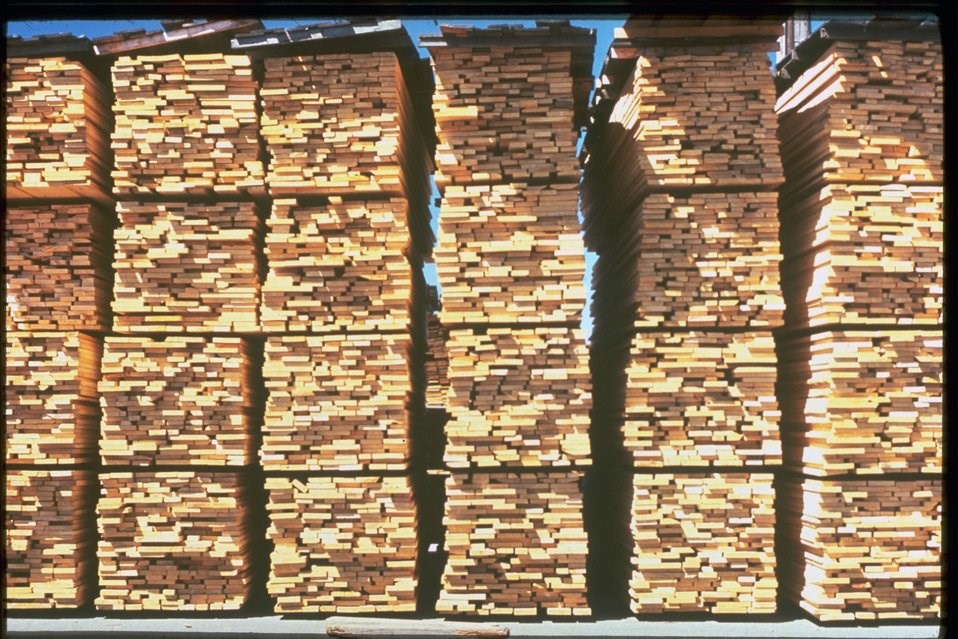Record-high North American lumber prices are a good news, bad news story for B.C. industries.
High lumber prices have kept B.C. sawmills busy and allowed forestry companies to bank some hefty profits – a far cry from late 2019 and early 2020, when sawmills were being curtailed or permanently shut down.
But record-high prices for lumber and other wood products are making it hard for homebuilders, especially those companies tied into stipulated price contracts.
“Homebuilding is through the roof,” said Larry Clay, president of Clay Construction and incoming president for the Canadian Homebuilders Association. “Everybody I talk to is exceptionally busy. It’s about as busy as it’s ever been.”
The bad news is that lumber prices are also through the roof.
In recent months, softwood lumber prices have been breaking records. The reason is booming housing starts and home renovations in the U.S. and Canada, and a shrinking timber supply in B.C., traditionally one of North America’s biggest softwood lumber producers.
U.S. housing starts surged to 1.38 million units in 2020 during the global pandemic – higher than the 1.29 million units pre-pandemic in 2019, according to wood products analyst Russ Taylor.
North American sawmills can hardly keep up with the demand for wood products from new home construction and home renovations, and the U.S. has even been importing lumber from high-cost regions like Sweden.
According to Natural Resources Canada, eastern spruce-pine-fir two-by-fours were selling for $1,400 per thousand board feet in March; Western spruce-pine-fir two-by-fours for $1,200 per thousand board feet. Other products like oriented strand board (OSB) and panel board have been selling for similarly high prices.
One year ago, in March 2020, lumber prices were between $550 and $600 per thousand board feet. Prices then dipped, throughout the spring of 2020, as the pandemic cooled the home construction market.
It resumed with a vengeance in the summer and fall of 2020, thanks to pent-up demand, spiking prices to around $1,200 per thousand board feet, before dipping down again for the winter, and then spiking again around the beginning of this year.
“We have jumped from $11 to $12 a square foot in lumber, to $33 to $35 a square foot right now,” said Vinny Maharaj, president of Taranis Construction, a construction management company that builds multi-family homes.
He added that the price for plywood has also jumped threefold from this time last year.
Prices for lumber, plywood and OSB are so high that Maharaj has been looking into buying Canadian lumber from Bellingham, Washington, for the first time, because even Canadian-made lumber is a bit cheaper when purchased from the U.S.
“I’ve been building for 20 years – never been in this situation,” Maharaj said.
For some homebuilders, the increased costs can be passed onto homeowners. The National Association of Home Builders (NHBA) in the U.S. estimates a 180% increase in lumber prices since last spring adds roughly US$24,000 to the price of a single family home in the U.S. Canadian homebuilders likewise say the higher lumber prices can add $30,000 to $40,000 to the price of a new home. Builders who work on contract with stipulated prices could face losses or at least dramatically shrinking profits.
“If it’s fixed price, you have builders who are losing money, or at least a reduced profit,” Clay said. “If you are a spec builder, and you have a set price, it’s a reduced profit.”
Maharaj’s company builds multi-family developments on contract with developers. Those developers don’t much like it when he has to tell them the final cost of their project is going way up, due to skyrocketing lumber prices.
“Normally, [when] there’s a shift in lumber pricing, we pull money out of the contingency within our budgets,” Maharaj said. “Right now, projects are getting put on hold because owners have to go and refinance.
“It’s creating tension because now the blame is going to go on the construction management company. ‘Oh, gee, you underestimated the budget.’ Well, no we did not. That’s what the market is doing. Now we are fighting with developers to cover our percentage on that overrun.”
The question on everyone’s mind in the construction sector is how long these record-high lumber prices will continue.
“The issue is going to become where our clients, the people who are bidding for these builds, will not want to build, or the shift is going to go towards concrete,” Maharaj said.
Taylor said most analysts expect the current high prices to come down in 2021, but the estimates range wildly, from US$550 to US$865 per thousand board feet.
“I expect prices to peak shortly and then retrench down from the US$1,000 level to the US$650 area in the second quarter before rising again in late second quarter through mid-third quarter before a fourth quarter lull takes prices lower again. [But] while the peak price may be near or about to pass, there are so many wildcards in play that no one knows what is going to happen with lumber prices, as shown by the wide range of people that forecast prices for their business or as a living.”



